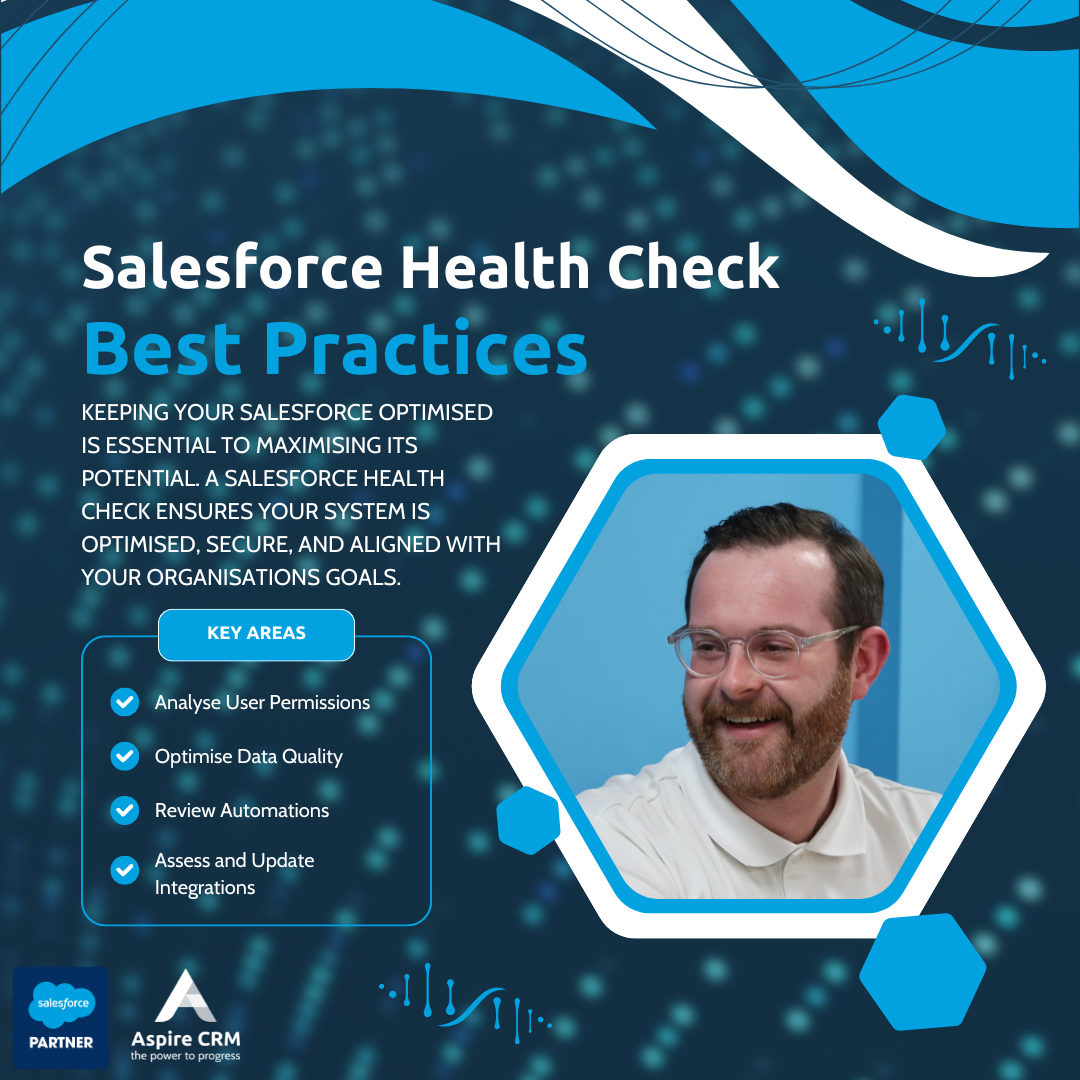
Keeping your Salesforce optimised is essential to maximising its potential as a CRM powerhouse. A Salesforce health check ensures your system is optimised, secure, and aligned with your business goals. This guide will walk you through the best practices for a thorough Salesforce health check to maintain a high-performing, efficient CRM.
1. Analyse User Access and Permissions
Proper user management is essential for maintaining security and efficiency. Over time, roles, profiles, and permission sets can become misaligned or overly complex if left unchecked.
Key Steps:
- Conduct a role and profile audit to ensure each user’s access aligns with their current responsibilities.
- Use permission sets rather than profiles where possible, as they’re easier to manage and customise.
- Remove unused or redundant permissions and regularly review active logins for unusual activity.
2. Optimise Data Quality and Integrity
Accurate data is the foundation of effective Salesforce usage. Data quality can lead to missed opportunities, flawed analytics, and inefficient workflows.
Key Steps:
- Deduplicate records and consolidate any duplicates arising from manual data entry or third-party integrations.
- Implement validation rules to enforce data quality at the point of entry.
- Schedule regular data cleansing to keep records current, accurate, and actionable.
3. Review and Optimise Automation
Automations in Salesforce, such as workflows, process builder, and flows, can improve efficiency but may also cause performance issues if not optimised.
Key Steps:
- Identify redundant workflows and merge or remove them as needed.
- Review any complex automations for opportunities to simplify processes, reducing the risk of delays or errors.
- Use Scheduled Maintenance Reports to review and monitor the health of active automation.
4. Assess and Update Integrations
Salesforce often acts as the central hub for multiple systems and integrations. Regularly assessing these integrations ensures they’re running smoothly and securely.
Key Steps:
- Review all active integrations to ensure each is still necessary and functioning properly.
- Update API versions to ensure compatibility with the latest Salesforce releases.
- Test each integration to confirm that data is syncing accurately and in real-time.
5. Evaluate Performance and Scalability
As your organisation grows, so will your Salesforce instance’s demands. A health check should include an evaluation of your system’s scalability and performance.
Key Steps:
- Use Salesforce’s Optimiser Tool to identify areas affecting performance, such as unused custom fields or outdated reports.
- Monitor page load times and evaluate if any pages could benefit from optimisation.
- Regularly evaluate storage limits, considering data archiving options if nearing capacity.
6. Monitor Security and Compliance
Maintaining compliance and security standards is critical in today’s data-sensitive environment. A thorough security review ensures your system effectively protects user and customer data.
Key Steps:
- Review login history for any suspicious activity and use multi-factor authentication where possible.
- Conduct regular penetration testing to identify vulnerabilities.
- Keep up with Salesforce’s compliance updates to ensure alignment with data protection laws like GDPR.
7. Implement Regular Training and Documentation
Even with the best setup, user knowledge can be the difference between a healthy and inefficient CRM. Regular training ensures users understand system changes and are fully equipped to utilise Salesforce effectively.
Key Steps:
- Schedule quarterly training sessions to update users on system changes and best practices.
- Provide easy-to-access documentation that users can reference for tasks and troubleshooting.
- Gather user feedback to identify any issues or areas for improvement in the user experience.
Final Thoughts
A comprehensive Salesforce health check, performed regularly, can help your organisation stay secure, efficient, and ready to scale. By following these Salesforce Health Check Best Practices you can proactively identify and address potential issues, ultimately boosting productivity, data integrity, and overall system performance.
Implementing these checks quarterly or semi-annually will ensure your Salesforce instance remains a reliable, optimised asset to your business strategy.




